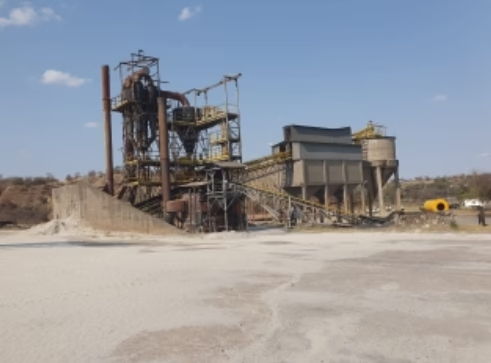
Zimbabwe’s sole phosphate producer, Dorowa Mine in Buhera, is set for a major revival following a US$5.3 million capital injection from the Mutapa Investment Fund, signalling a critical step toward restoring local fertiliser production and reducing costly imports. The move marks a turning point in the nation’s agricultural industrialisation agenda.
Established in 1965 and reaching full production by 1973, Dorowa Mine was long central to national fertiliser security. However, decades of undercapitalisation and neglect saw output decline to just 15 percent of capacity. The Mutapa Fund, in partnership with the Industrial Development Corporation of Zimbabwe (IDCZ), is now spearheading a refurbishment programme designed to restore production to levels sufficient to meet domestic demand.
IDCZ Board Chairperson, Mr Winston Makamure, highlighted the scale of the challenge, noting that much of the plant’s infrastructure had suffered from prolonged under-maintenance, with the last major overhaul dating back to 1973. “When we came in as a new board, the plant was operating at 15 percent capacity utilisation. Early improvements pushed production to 26 percent, but those gains were reversed due to the lack of maintenance,” he explained.
Phase one of the refurbishment, funded by US$5.3 million from the Mutapa Investment Fund, is expected to be completed by April 2026. This initial phase aims to produce 100,000 tonnes of phosphate concentrate, translating to 200,000 tonnes of basal fertiliser. The subsequent phase, slated for the second and third quarters of next year, will bring total investment to US$16 million, positioning Dorowa to meet Zimbabwe’s national fertiliser requirement of 350,000 metric tonnes by 2026–2027.
The Parliamentary Portfolio Committee on Industry and Commerce recently visited Dorowa Mine to assess operations. Portfolio Committee Chairperson Honourable Clemence Chiduwa emphasised the importance of corporate governance and sustainable management of the facility. “Dorowa is the only mine in Zimbabwe producing phosphate, the primary ingredient for basal fertilisers. Over the years, we have witnessed a breakdown of the fertiliser supply chain. With Mutapa Investment Fund’s involvement, the situation is expected to improve,” he noted.
Beyond fertiliser production, Dorowa Mine’s magnetite output offers potential synergies with Zimbabwe’s steel industry, underscoring the facility’s strategic significance for broader industrialisation and economic growth. Analysts suggest that a revitalised Dorowa could catalyse employment, strengthen local value chains, and reduce dependence on imported inputs, aligning with national priorities for agricultural self-sufficiency and industrial transformation.
The Mutapa Fund’s intervention signals a renewed focus on restoring Zimbabwe’s critical industrial assets, demonstrating how targeted investment in underutilised infrastructure can drive economic recovery, food security, and industrial modernisation.




